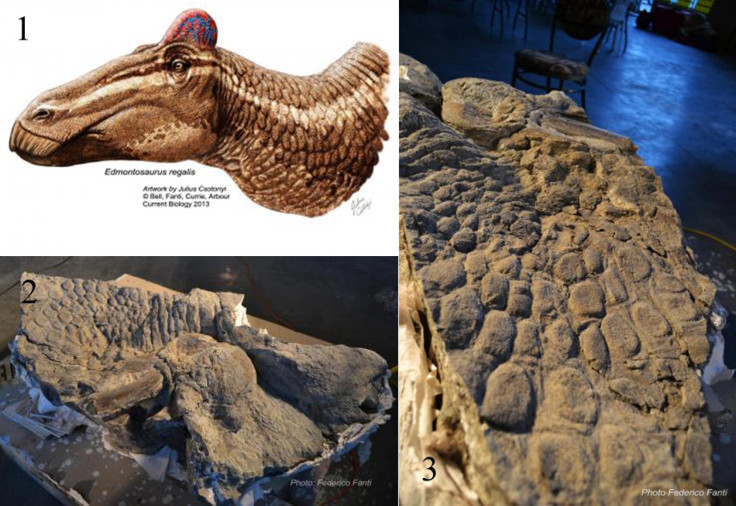New Fossil Discovery Reveals North America’s Most Common Dinosaur Had A 'Cocks Comb' On its Head

Researchers from the University of New England in Australia have discovered a fossil in Canada dating back millions of years that may ignite a rethinking of what scientists know about the appearance and behavior of the most populous dinosaur in North America: the duck-billed dinosaur.
The researchers discovered a rare, mummified specimen of the Edmontosaurus regalis in deposits west of the city of Grande Prairie in the province of Alberta, which showed that the dinosaurs’ heads were adorned with a fleshy comb, most similar to the roosters' red crest. The specimen is currently preserved at the University of Alberta and has been described in the study published in the journal Current Biology on Thursday.
“Until now, there has been no evidence for bizarre soft-tissue display structures among dinosaurs; these findings dramatically alter our perception of the appearance and behavior of this well-known dinosaur and allow us to comment on the evolution of head crests in this group,” Phil Bell of the University of New England, said in a statement. “It also raises the thought-provoking possibility of similar crests among other dinosaurs.”
Specimens of Edmontosaurus have been classified with various similar types of dinosaurs including Claosaurus, Diclonius, Hadrosaurus, Thespesius and Trachodon. The Hadrosaur was the most common dinosaur in North America between 75 million and 65 million years ago. According to the researchers, Hadrosaurs were large herbivorous animals, measuring about 12 meters long, and they filled a similar ecological role that Australian kangaroos or Canadian deer play today.
After finding skin impressions on parts of the fossil, the researchers realized that they had found something special, according to the statement. But they became sure of the incredible discovery only after Bell put a chisel through the top of the skull and found the crest. According to Bell, no one ever suspected dinosaurs may have combs like roosters because the evidence of soft tissue usually decays before fossilization.
“An elephant’s trunk or a rooster’s comb might never fossilize because there is no bone in them. This discovery is equivalent to learning for the first time that elephants had trunks. We have lots of skulls of Edmontosaurus, but until now there have been no clues to suggest they might have had a big fleshy crest,” Bell said.
The researchers said that the significance of this discovery may not be limited to Edmontosaurus alone. There are possibilities that fleshy structures could have been present on other dinosaurs, including species such as the Tyrannosaurus Rex or Triceratops.
While scientists are not sure about exactly what the cocks comb might have done for the duck-billed dinosaurs, similar structures on roosters and other male birds are used by males to attract the females.
“We could imagine a pair of Edmontosaurus sizing each other up, bellowing, and showing off their head gear to see who would come out as the dominant male and who would take charge of the herd,” Bell said.
© Copyright IBTimes 2024. All rights reserved.












